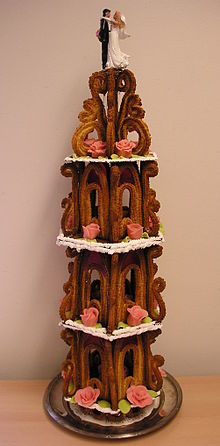**History of Confectionery:**
– Sugar and desserts have a long history in India dating back to 500 BCE.
– Honey was used for confectionery in Ancient China, India, Egypt, Greece, and Rome.
– Persians and Greeks spread sugar and sugarcane agriculture.
– Medieval European physicians learned sugar uses from Arabs and Greeks.
– Non-medicinal confectionery began with sugar-coated nuts in medieval England.
– Traditional confectionery dates back to ancient times.
– European and Ottoman influences shaped confectionery recipes.
– The first confectionery in Manchester was opened by Elizabeth Raffald.
**Sweetening Agents in Confectionery:**
– Common sweeteners include table sugar, invert sugar, and syrups from starch hydrolysis.
– Sugar-free candies are available.
– Commercial confections use a variety of sweetening agents.
– Corn syrup is a common sweetener in confections.
**Types and Categories of Confectionery:**
– Major categories of bakers’ confectionery include cakes, sweet pastries, doughnuts, scones, and cookies.
– Cakes vary from bread-like to elaborate styles.
– Pastries have diverse dough bases and fillings.
– Mooncake pastries are traditional for the Mid-Autumn Festival.
**Sugar Confectionery:**
– Includes sweet, sugar-based foods like sugar candies, chocolates, candied fruits and nuts, chewing gum, and ice cream.
– Different regional terms for sugar confections include sweets, candy, lollies, chewy, and chuddy.
– Classified under ISIC 1073 by the United Nations, NACE 10.82 in the European Union, and split into three categories in the NAICS 2012 in the United States.
– Ice cream and sorbet are classified under ISIC 1050, NACE 10.52, and NAICS 311520.
**Nutritional Aspects and Risks of Confectionery:**
– Confections are low in micronutrients and protein but high in calories.
– They are often considered empty calories and ultra-processed foods.
– Some confections, like fried doughs and chocolate, are high in fat.
– Contaminants and coloring agents in confectionery can be harmful, especially to children.
– Many sugar confections are classified as foods of minimal nutritional value in the US.
Confectionery is the art of making confections, which are food items that are rich in sugar and carbohydrates. Exact definitions are difficult. In general, however, confectionery is divided into two broad and somewhat overlapping categories: bakers' confections and sugar confections. The occupation of confectioner encompasses the categories of cooking performed by both the French patissier (pastry chef) and the confiseur (sugar worker).

Bakers' confectionery, also called flour confections, includes principally sweet pastries, cakes, and similar baked goods. Baker's confectionery excludes everyday breads, and thus is a subset of products produced by a baker.
Sugar confectionery includes candies (also called sweets, short for sweetmeats, in many English-speaking countries), candied nuts, chocolates, chewing gum, bubble gum, pastillage, and other confections that are made primarily of sugar. In some cases, chocolate confections (confections made of chocolate) are treated as a separate category, as are sugar-free versions of sugar confections. The words candy (Canada & US), sweets (UK, Ireland, and others), and lollies (Australia and New Zealand) are common words for some of the most popular varieties of sugar confectionery.
The confectionery industry also includes specialized training schools and extensive historical records. Traditional confectionery goes back to ancient times and continued to be eaten through the Middle Ages and into the modern era.
